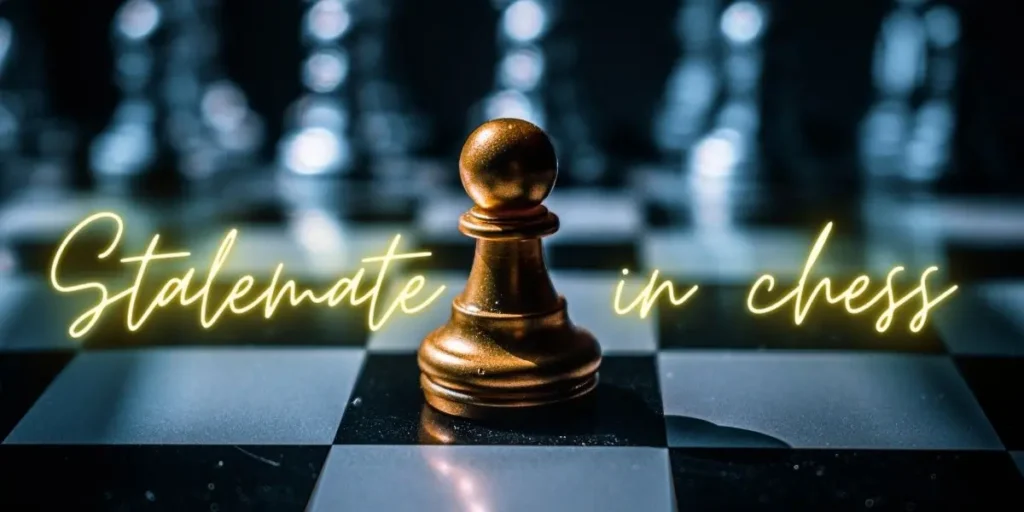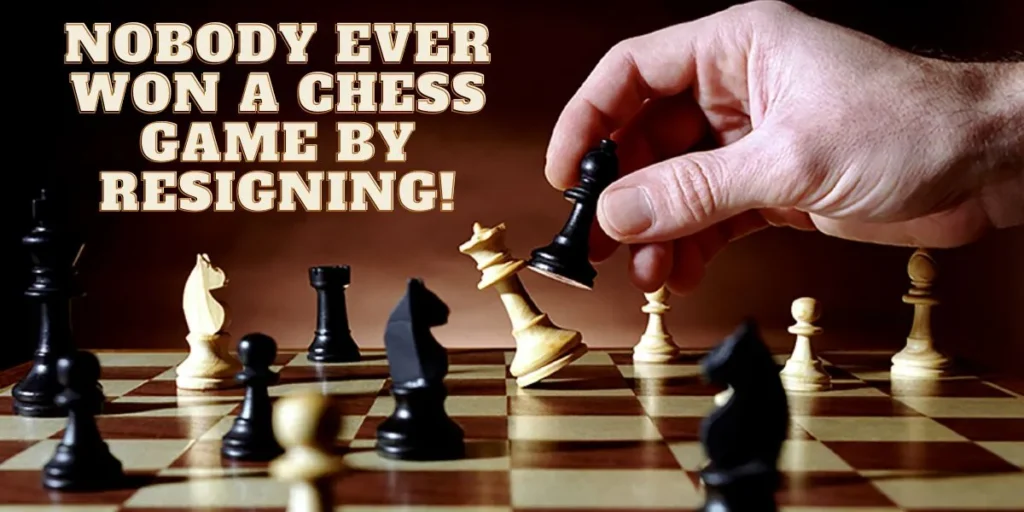Chess is a strategic board game that has been enjoyed for centuries in the history of chess by players of all ages and skill levels. One of the key elements of the game is understanding the rules, including when a game results in a draw. One such scenario is a stalemate.
Stalemate in Chess is evolved with the ages and is now used as a gameplay strategy. Players across the globe use the stalemate rules to their advantage in various situations. If you are a chess enthusiast you need to be aware of such strategies. In this article, we are going to understand the rule of stalemate, toggle with various scenarios, and learn how to avoid it.
What's a stalemate in chess?
A stalemate in chess occurs when a player needs to be in check but has no legal moves available to them. This means that the game is at a standstill and neither player can win, resulting in a draw. Stalemate is a specific condition when a game ends in a draw.
A chess game where nobody ends as a winner, a common name for a stalemate in chess. It is an integral part of the game, yet still foreign to many new chess players. Let’s first discuss some stalemate situations and see what they look like on a chessboard.
How does a Stalemate occur in Chess?
A stalemate can occur in several ways. One common scenario is when a player’s king is surrounded and cannot move without being captured. In this situation, the king is not under attack. Chess rules dictate that a king can’t move to the dangerous square.
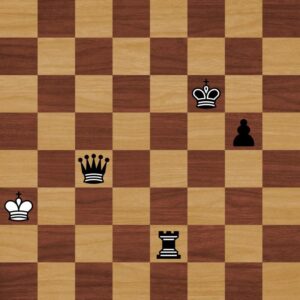
“Dangerous squares are the squares covered by the enemy pieces. Down below is a good example”.
Therefore, the king can’t move, and since he isn’t under attack, the game ends at a standstill. Neither side can win until the black king moves. The catch is he can’t move anywhere. Thus they declare the game as a stalemate.
Another scenario is when a player’s pieces are blocked and cannot be moved, effectively trapping their king. In the history of chess, most stalemates come from the endgames, but it doesn’t generalize the statement. A player can lose a winning game in the middle game with a stalemate draw. Here is a good example

The rule is that the paying player must have no legal moves, given the king is not in check. In this case, no black piece can make a legal move. The king is not under attack either, hence the stalemate.
How to Avoid a Stalemate in Chess?
To avoid a stalemate in chess, it is important to always be aware of the positions of your pieces. You must always search for the potential moves of your opponent. Planning your moves ahead of time and anticipating potential scenarios can help you avoid ending up in a stalemate situation.
- Keep track of moves your big pieces (Queen & Elephant) covers on board.
- Ensure the opponent’s king is under check
- Think a few moves ahead
Additionally, paying attention to the position of your king and making sure he is not cornered can also help prevent a stalemate. Keep tabs on opponents king, and check in every move if possible. For intermediate and advanced players, thinks a few moves ahead and try to corner the king. Analyzing a few moves ahead can give you an edge and avoid possible stalemate.
It’s an excellent strategy to make a game ends with a stalemate for losing positions. Players worldwide use the method to build up points in international chess games. A recent example of this can is this game by Magnus Carlsen.
How did Magnus Force a Stalemate to Win a Losing Game?
Below is an amazing endgame between Magnus Carlsen (White) and Maxime Vachier-Lagrave at Chess.com Speed Chess Championship played on 18th December 2022.
At initial position, Magnus is slightly losing. So, he calculated 29 moves ahead to make the game a draw by stalemate.
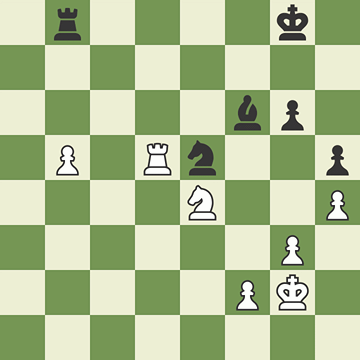
They’re teaching how to use the stalemate to your advantage and how to protect yourself from it. Here is what you need to know while dealing with a stalemate in chess.
How to Stalemate a Losing Game?
To stalemate a losing game you need to look for opportunities to stick your king without a check. It’s hard to detect a stalemate, but very easy to do one. If you are losing a chess game and looking for a stalemate opportunity, you must keep the rules given in mind.
Middle Game Stalemate Tips
- Try to eliminate all the legal moves of your pieces on the board.
- Keep an eye on enemy pieces and look for stalemate opportunities.
- Queen and Rooks are heavy hitters but still have the highest chance to blunder a statement, always visualize their movements before every move.
End Game Stalemate Tips
Endgame stalemates are the most important to learn. They work as the last resort.
1. Pawn Endgames
Move the king to make it end up in front of the opposite side pawn. It will help you to prevent opponents’ pawn to promote as well as gives you an opportunity for stalemate. This works perfectly in endgame situations when king-pawn endgames. You can lure the opponent into your trap and draw a losing game with a stalemate!
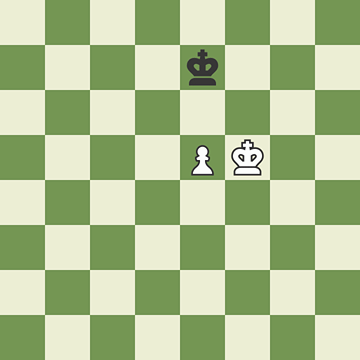
2. Bishop Endgame
You should keep in mind to eliminate the bishop of similar color to the square to which a pawn can promote. It will help you to hind from the sight of the opponent’s bishop and gives you an opportunity for stalemate. Here is what happens if you don’t.
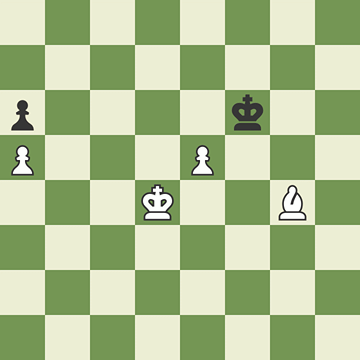
There are many other variations to the endgame stalemate situations. You must read chess books to get an in-depth analysis of the situation. Comment down in the article to know the book names or any other related query, we are happy to help.
The Impact of Stalemate on a Chess Game
A stalemate in chess can be both frustrating and disappointing for players, as it means the game ends in a draw and neither player wins. The feeling of losing a won game can be devastating. However, it is important to remember that a stalemate is a legal outcome of the game and is simply a part of the rules. Understanding the scenarios that can result in a stalemate can help players make better decisions during the game. It can help you avoid ending up in this situation.
Conclusion: Understanding the Stalemate in Chess
The stalemate in chess is a key aspect of the game that every player should understand. By learning about the different scenarios that can result in a stalemate, as well as strategies for avoiding it, players can improve their overall game and enjoy a more successful chess experience. Whether you are a beginner or a seasoned player, understanding the stalemate is an important step in improving your chess skills.
FAQs
Are Stalemate and Draw are same in chess?
Precisely not. A stalemate is a specific scenario in which the game ends in a draw. Every stalemate is a draw, but not every draw is a stalemate.
What is the difference between Stalemate and Checkmate in chess?
You can determine the stalemate and checkmate by the king’s status. If the game ends with king under check, then it is checkmate. If the king is not under attack, then it can be a stalemate.
What is Stalemate in Chess?
Stalemate is a situation in chess where a player’s king is not in check but no legal move can be made.
How does Stalemate occur in Chess?
Stalemate occurs when a player cannot make any legal move but the king is not in check.
Is Stalemate a win or a draw in Chess?
Stalemate is considered a draw in Chess.
- Aryan Kumarhttps://way2wise.com/author/aryan-kumar/
- Aryan Kumarhttps://way2wise.com/author/aryan-kumar/
- Aryan Kumarhttps://way2wise.com/author/aryan-kumar/
- Aryan Kumarhttps://way2wise.com/author/aryan-kumar/

